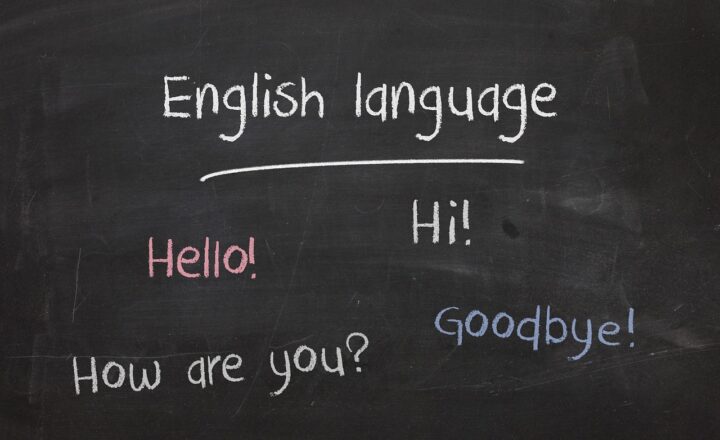How Language Learning Can Build Bridges Between Diverse Communities
November 11, 2024

Language is one of the most powerful tools we possess as a means of communication, yet it goes far beyond mere words. It represents culture, identity, and shared experiences. In an increasingly interconnected world, the ability to communicate across language barriers has become paramount. Learning new languages does not just open doors for personal growth; it has the potential to bridge gaps between diverse communities, foster understanding, and cultivate a sense of global citizenship.
1. The Necessity of Language Learning in a Globalized World
Today, we live in a globalized society where interaction with people from diverse backgrounds is vital. As businesses extend their reach across borders, cultural exchange becomes inevitable. In this context, language learning plays a significant role in facilitating effective communication.
Being multilingual allows individuals to:
- Enhance Career Opportunities: In the workforce, knowledge of multiple languages sets candidates apart. Employers often favor multilingual candidates who can engage with a wider client base and promote inclusivity within teams.
- Strengthen Relationships: Engaging with others in their native language nurtures deeper connections. This shows respect and appreciation for one’s culture, values, and traditions.
- Foster Cultural Appreciation: Learning a language naturally leads to exploration of the associated culture, history, and customs, promoting empathy and understanding among diverse groups.
As communities become more diverse, the need for language proficiency increases not only for individual growth but also for community cohesion.
2. Language Learning as a Bridge to Understanding
Language learning serves as a bridge for fostering understanding between communities. When individuals take the time to learn a new language, they engage in behaviors that enhance their intercultural competence, such as:
- Empathy: Recognizing the complexities of a different culture can enhance our ability to empathize with others. Charged with emotions and personal stories, language holds the key to understanding cultural nuances and sensitivities that may otherwise go unnoticed.
- Active Listening: Language learning promotes active listening skills as learners become accustomed to understanding native speakers’ accents and dialects. This attentiveness helps break down misunderstandings across cultures, fostering dialogue rather than debate.
- Curiosity: Language learners often find themselves exploring not just vocabulary and grammar but also the social, historical, and philosophical contexts that shape a language. This curiosity can lead to inter-community dialogue and collaboration.
Language brings communities closer, ultimately breaking down walls of prejudice and misunderstanding, paving the path for a united world.
3. Case Studies: Successful Initiatives in Language Learning
Various initiatives around the world illustrate how language learning has successfully bridged divides and created inclusive communities. Here are a few noteworthy examples:
- SPEAK Global: International Language Exchange – This organization pairs language learners with native speakers globally through online platforms to encourage real-time conversations that promote cultural exchange and friendship. Participants share insights, gaining language proficiency while forging solidarity with one another.
- Community Language Schools – Various non-profit organizations offer language courses for marginalized communities, ensuring inclusivity and fostering a sense of belonging. By empowering individuals through language skills, they create informed citizens who significantly impact their communities.
- Language Cafés – These informal gatherings allow speakers of different languages to come together, share stories, and learn from one another. They promote social interaction and eliminate the fear that often accompanies language barriers by providing a relaxed learning atmosphere.
These examples show how language learning can transcend boundaries and foster a sense of belonging among individuals from various backgrounds.
4. The Role of Technology in Language Learning
With advancements in technology, language learning has become more accessible and engaging. Tools such as language apps, online courses, and virtual conversation partners facilitate learning from anywhere in the world. Technology contributes to:
- Personalized Learning Experiences: Learners can tailor their language education based on their pace, style, and goals. Have conversations with native speakers via apps like Tandem or HelloTalk, connecting with others and promoting multicultural dialogues.
- Interactive Learning: Gamified language applications such as Duolingo and Babbel make learning fun and engaging. These platforms encourage users to practice conversational skills in a non-threatening environment, fostering confidence to communicate.
- Global Connectivity: Online forums and social media groups allow learners to connect across borders, creating virtual communities for sharing experiences and resources. Social networks facilitate conversations that can lead to collaborations, understanding, and shared goals in diverse communities.
Technology is reducing barriers in language learning, making it easier than ever to connect and understand people from different cultures.
5. Challenges in Language Learning and Communication
While language learning can pave the way for better understanding, certain challenges can hinder communication between communities:
- Dialect Variations: Even when two people speak the same language, variations in dialects, slang, and accents can create confusion and misunderstandings. It’s essential for learners to engage with the culture to navigate these intricacies successfully.
- Fear of Making Mistakes: Language learners often fear embarrassing themselves due to mistakes. This can create a barrier to open dialogue. Encouraging supportive environments can help alleviate these fears and promote more interaction between different groups.
- Access to Resources: Accessibility is crucial for successful language learning. Communities lacking educational resources may face difficulties in offering language programs. Policies to invest in educational infrastructure can help address these disparities and promote equal opportunities.
Overcoming these challenges is crucial in ensuring that language learning serves its purpose of bridging gaps between diverse communities.
Conclusion
In the age of globalization, language learning is no longer just an academic exercise; it is a vital tool that fosters understanding, empathy, and collaboration among diverse communities. By investing in language education today, individuals and communities can create a more connected and inclusive world.
Whether through language exchanges, technology-based tools, or community initiatives, we can harness the power of language to break down walls and build bridges.
The benefits of language learning extend beyond personal growth; they resonate throughout communities, paving the way for richer interactions and deeper understanding. As we strive for a more harmonious global society, let’s embrace language learning as a key to unlocking the vast potential of every individual and community, building a united future for generations to come.








